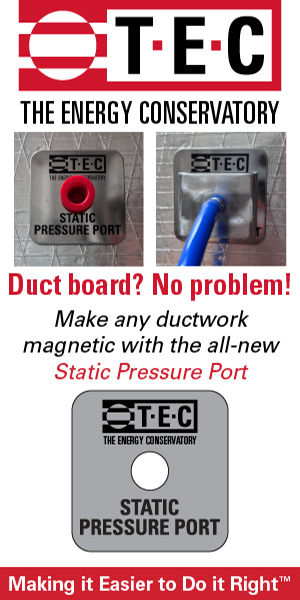Lakeside recently did this for installation because we experienced more than normal refrigerant leaks on our winter air conditioning installations this spring. We discovered that the team was pulling a vacuum using their gauges and hoses, which were not rated to pull a vacuum.
We realized the readings weren’t always accurate. In response, we created a tool package for pulling a vacuum with the proper hoses, a valve-pulling tool, and a Bluetooth micron gauge to record the readings and take screenshots. All that data gets uploaded to Service Titan.
By implementing this simple process, we no longer have those recalls.
Other training happens on Saturdays. That’s when we offer NATE-specific training to prepare techs and installers for NATE certification.
At Lakeside, all field personnel have 90 days to become NATE certified. This requirement is essential to new technicians if they want to evolve into someone who can work independently in their own truck. We found that the only way to get this done was to create classes to help them.
Career Development
This is structured to create levels that provide incremental opportunities for our technicians — installers and service techs — to advance. That meant developing “Lakeside” standards based on High-Performance HVAC™ standards.

That led to creating a career path self-assessment, which illustrates each type of service, guiding each apprentice to becoming a craftsman. Every career path opportunity has specific benchmarks to help our team achieve their desired pay or skill levels. We offer the specific training associated with each skill and pay level.
As I said earlier, NATE certification is an entry-level requirement. All our technicians must earn that certification. We also require and provide training from National Comfort Institute (NCI) in airflow and combustion and carbon monoxide (CO) safety training and certification. These are required to be on our install or service teams.
Our written self-assessment allows techs to rate themselves. We use a 1-to-5 rating process where one means zero experience, and five means expert enough to teach somebody else. Each tech rates themselves and their peers.
The managers also use this system to assess the techs. Then, they sit down together, review their strengths and weaknesses, and develop training protocols to help them improve and grow.
Each career level has required milestones necessary for the technician to advance. We use the assessments to create goals for each technician based on what they need to “level up,” and this also creates a template for our performance review process.
The key is that we never “complete” training for our team. There is always a next step. However, once a tech meets a specific predetermined goal with measurably proven proficiency, the team member receives a pay adjustment connected to that goal.
Program Development
Our in-house training depends on clear communication. Team leaders communicate during our weekly manager meetings, and we pick training content based on the needs identified in those meetings.
Usually, training content focuses on skills needed to get technicians to the next level in their career path, which includes maintaining CEUs for Lakeside’s required certifications. Content is also in response to customer service standards or company objectives like reducing callbacks.
Training content requires constant monitoring and communication about what is happening in the field to best use training budgets and time.
Our service and installation managers are responsible for developing and updating training materials. Sometimes, there’s a crossover event, such as when NCI comes in. All our departments participate in that.
Click Below for the Next Page:













Recent Comments